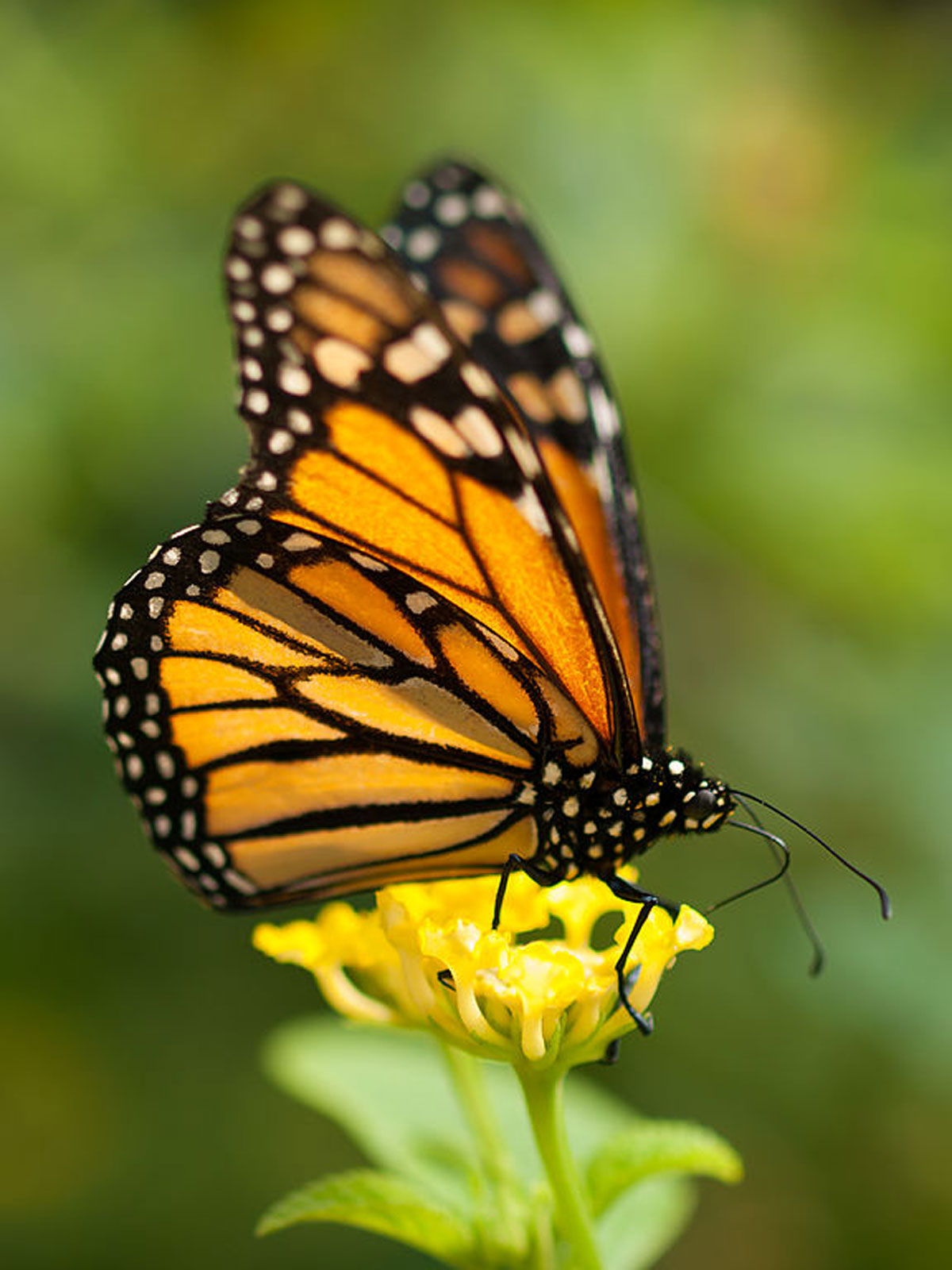A Butterfly House of Serenity: Butterflies & Blooms
Monarch butterflies are the most popular of the vast number of genres. (William Warby)
A world in turmoil, our country conflicted by politics, social mores, what better time for an escape into a colorful house of serenity, writes our travel editor Al Auger. – @Siliconeer #Siliconeer #Travel #GoldenGatePark #SanFrancisco #ConservatoryofFlowers #Butterflies #Leisure #SFBayAreaDayTrips
Just opened at the Conservatory of Flowers in Golden Gate Park is a return of the popular ‘Butterflies & Blooms’ running through June 30, 2017. “On a daily basis,” said Matthew Stephens, Conservatory Director, “our visitors ask us when the butterfly exhibition is coming back. It is that loved and is, by far and away, the most requested exhibition we have ever done at the Conservatory.” But, this wonderland of nature’s magic also makes one aware of a current Smithsonian Magazine story on the miracle of North America’s butterfly celebrity, the Monarch.
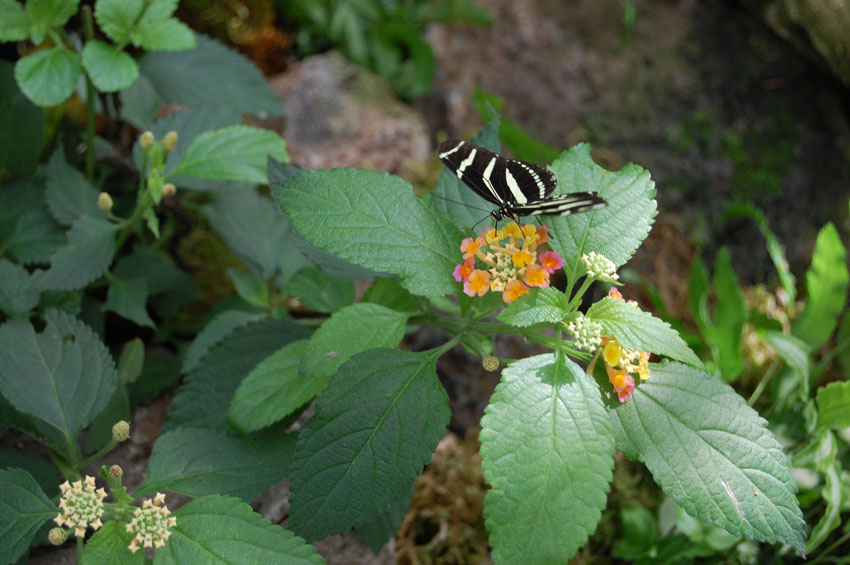
The Western migratory monarch arrives in central Mexico from southern Canada and western states in late October for the winter months. Based in Mexico’s Trans-volcanic Belt, a series of peaks reaching up to 10,800 feet, the cool air revives the exotic monarch after a non-stop flight of over 3,000 miles. Twenty years ago an estimated a billion monarchs overwintered in Mexico; since then that number has been down some 80 percent. Most experts blame the loss of the monarch’s favorite milkweed plant due to destructive herbicides. Another sad comment of man’s destructive psyche.
At the Butterfly & Blooms house, it is celebration of these beautiful creatures, yet birthed from the lowly caterpillar, and over twenty of their “cousins” species. Standing in this house of quiet kinetic splendor you are surrounded by vivid flora that reaches to the ceiling. Flitting from daisies, zinnias and so many other magnificent plants the butterflies do their “duty” feeding on sweet nectar, laying eggs and thus carrying pollen to the surrounding tapestry of colorful plants.
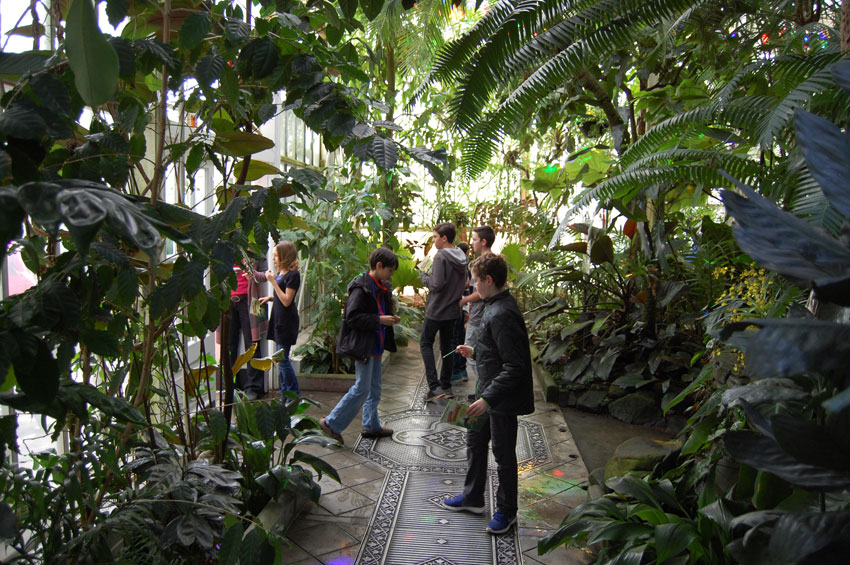
When you enter, you are in the Butterfly Bungalow and here I discovered a most captivating display that make this ephemeral experience unforgettable. I’m going to pirate what this wall-mounted display is all about from Nina Sazevich, the spokeswoman for the Conservatory. No one could describe it better.
“The Butterfly Bungalow at the entrance of the gallery also lets visitors observe one of the most critical stages of the butterfly’s life cycle – the transformation from caterpillar to butterfly. At the Bungalow, visitors see the chrysalises, hardened exoskeletons, formed by the caterpillars. These intriguing structures are so varied as the creatures that created them – some jade colored with gold spots, some sporting prominent and unusual horns. Inside, one of the great mysteries of nature is taking place – a total metamorphosis during which the caterpillar liquefies completely and its cell reorganize into a butterfly. Many visitors will be lucky enough to catch the moment when one of these transformed and winged beauties emerges.”
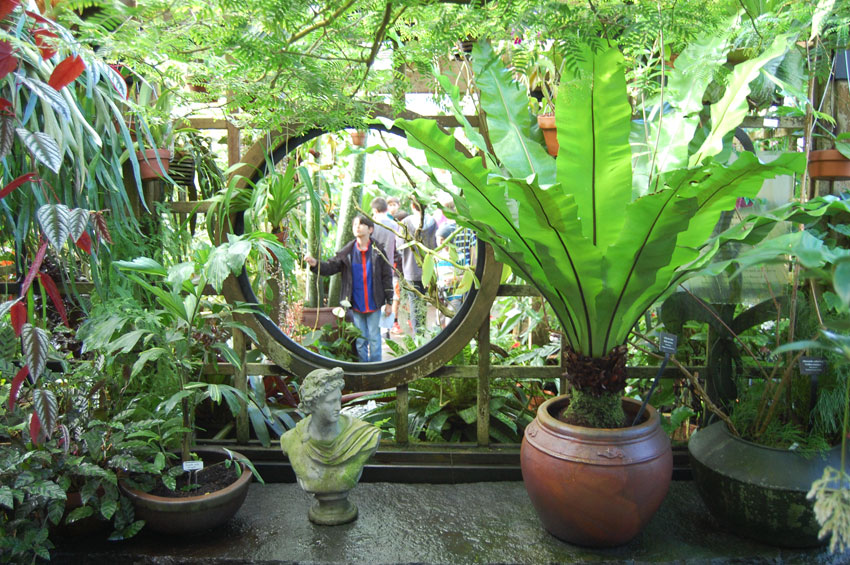
Thank you, Nina, I’m sure everyone who reads those words will, as I did, be transported back so many years to elementary school and our teacher speaking those very images.
Watching the butterflies, giant and small moths float, not fly, brings back memories of prima ballet legend Maria Tallchief. They feast from bloom to bloom delivering new life to propagate this vivid world. Young boys and girls add an unexpected joy, eyes wide trying to follow the airborne choreography. One young man, about five, is seemingly hypnotized by bright orange carp swimming in a rock-bound pool. A friendly docent describes the unborn wonders revealed around them.
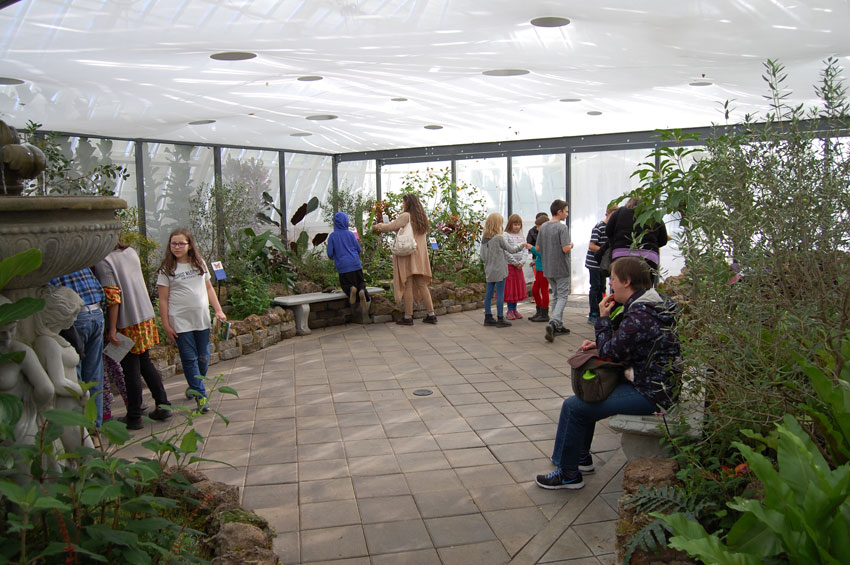
When you go, be sure to leave time to wandering through the labyrinth of corridors of 1,750 species of splendid flora from over 50 countries displaying exotic and colorful plants. Rare tropical plants display their vibrant and multihued beauty under glass. Completed in 1879, it was the first municipal greenhouse in San Francisco and the oldest in North America. This magnificent glass building was gifted to The City by engaged citizens and patterned after the historical Victorian-age Kew Gardens of England. It is a California Registered Historical Landmark Number 841.
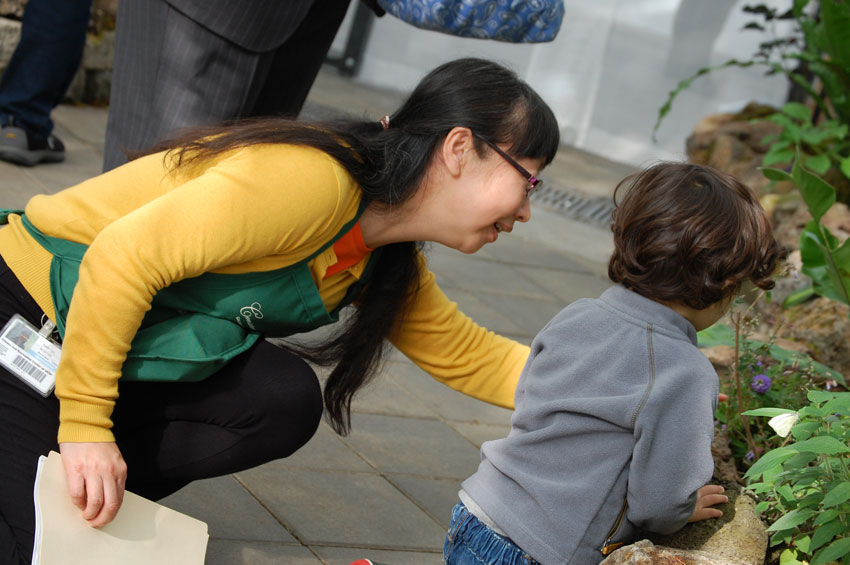
Before you begin your stroll, stop and take a deep breath. The thousands of living plants fill hallways with the purest air you will ever inhale. This dramatic science of photosynthesis is so strong it will give you a captivating physical effect. The corridors are also a cornucopia of sculptured artistry and creative ironworks framing the forest, if you will, of extraordinary breathing and living flora. It is one of the greatest affordable entertaining and education experiences today.
The experience is defined in a single word: Enjoy.
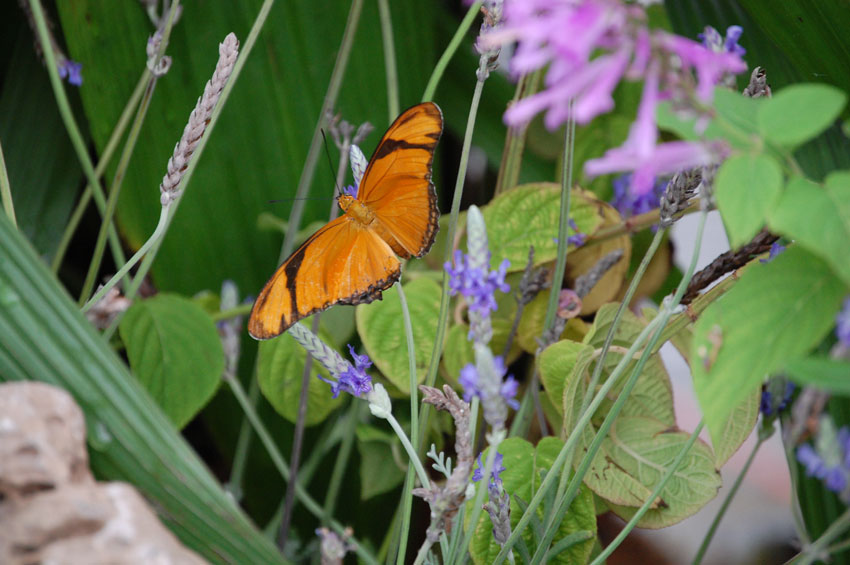
When You Go
Butterflies and Blooms is open every Tuesday through Sunday from 10 a.m. Last entry changes with the seasons: 4 p.m. through March 15; and 6 p.m. March 16 through October 31.
Admission for San Francisco residents (with proof): $6 general; $3 youth 12-17, seniors and students (with I.D.); $2 children 5-11; children 4 and under Free.
Admission for non-residents: $8 general; $6 youth 12-17, seniors and students (with I.D.); $2 children 5-22; children 4 and under Free.
For more information call 415-31-2090 or go to www.conservatoryofflowers.org
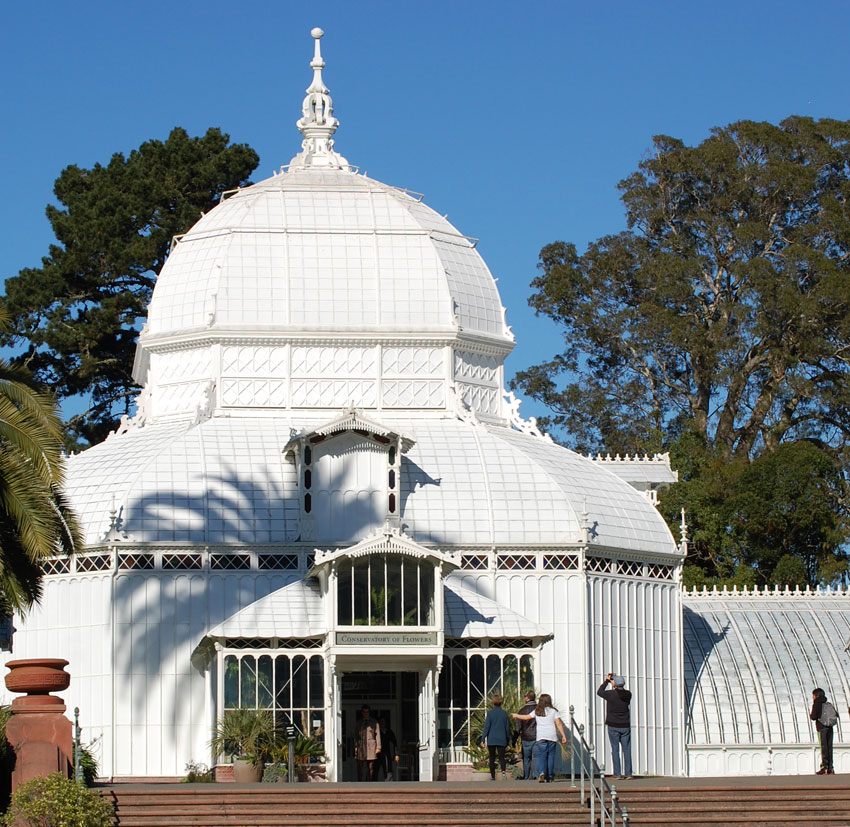
Kew Gardens in London, England. (William Warby)
